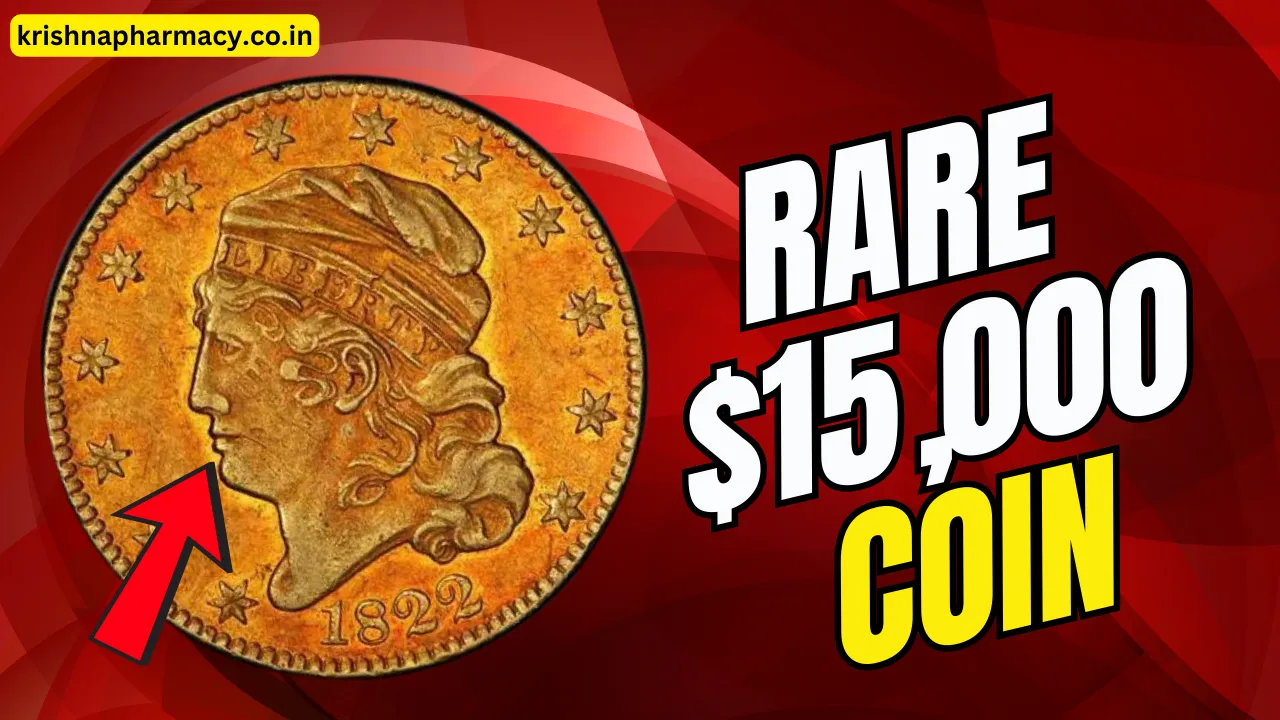Rare $15,000 Coin: Coins are more than just currency—they are time capsules preserving moments from history, symbols of culture, and miniature works of art. Among the countless coins minted over the years, the Rare $15,000 Coin stands out as a true collector’s treasure. This unique gem isn’t just valuable for its silver content but also for the historical significance it carries.
In this article, we’ll dive into the fascinating story behind the Rare $15,000 Coin, specifically the Kennedy half-dollar. From its creation and design to the reasons behind its skyrocketing value, we’ll explore why this coin is considered a prized possession in the world of numismatics.
Overview of the Rare $15,000 Coin
| Feature | Details |
| First Minted | 1964 |
| Silver Composition | 90% Silver (1964), 40% (1965-70) |
| Post-1971 Material | Copper-Nickel Clad |
| Obverse Design | Portrait of President Kennedy |
| Reverse Design | Presidential Seal |
| Highest Value | Up to $15,000 (Mint State Condition) |
The Story Behind the Kennedy Half-Dollar
The Kennedy half-dollar was introduced in 1964 as a tribute to President John F. Kennedy, following his tragic assassination in 1963. Its release wasn’t just a monetary decision—it was an emotional gesture that resonated deeply with the American public.
Demand for the coin was unprecedented, with many people holding onto them as cherished mementos rather than spending them. The first minting in 1964 featured a 90% silver composition, making these coins not only historically significant but also intrinsically valuable.
From 1965 to 1970, the silver content was reduced to 40%, and by 1971, the coin transitioned entirely to a copper-nickel clad composition. Despite the material changes, the Kennedy half-dollar maintained its status as one of the most recognizable and respected coins in U.S. history.
Why Is the Rare $15,000 Coin So Valuable?
1. Limited Availability
Coins from 1964 with 90% silver content are rare, especially those in Mint State (MS) condition. Over time, many coins suffered from wear and damage, reducing their collectible value.
2. Historical Significance
As a tribute to one of America’s most beloved presidents, the Kennedy half-dollar carries deep historical and emotional significance.
3. High Silver Content
The 1964 coins were made of 90% silver, which adds significant intrinsic value. Even the 40% silver coins (1965-1970) remain highly sought after.
4. Pristine Condition Matters
Coins that have been preserved in Mint State (MS) condition are exceptionally rare. Such pristine specimens command the highest prices in auctions, often reaching values as high as $15,000.
The Design That Captivated a Nation
The Kennedy half-dollar remains one of the most iconic designs in American coinage history.
- Obverse Design: The front side of the coin features a striking profile of President John F. Kennedy, crafted by Gilroy Roberts. The words “Liberty” and “In God We Trust” frame the design beautifully.
- Reverse Design: The reverse side, designed by Frank Gasparro, showcases the Presidential Seal—an American eagle holding an olive branch and arrows, symbolizing peace and strength.
The thoughtful artistry behind these designs transformed the Kennedy half-dollar into more than just a coin; it became a symbol of honor and legacy.
The Transition from Silver to Copper-Nickel
The year 1971 marked a turning point for the Kennedy half-dollar. Rising silver prices pushed the U.S. Mint to shift from silver to a copper-nickel clad composition.
While coins minted after 1971 are still collectible, they lack the intrinsic silver value of their predecessors. Collectors focus primarily on coins minted between 1964 and 1970 due to their higher silver content and historical value.
Factors That Drive the $15,000 Price Tag
1. Composition
The 90% silver content in the 1964 Kennedy half-dollar remains one of the coin’s most valuable attributes.
2. Rarity in Mint Condition
Coins rated Mint State (MS) by professional grading services like PCGS or NGC are incredibly rare and highly valued.
3. Historical Weight
As a commemorative coin honoring President Kennedy, its emotional and historical appeal makes it highly desirable among collectors.
4. Limited Supply
Pristine examples of the 1964 Kennedy half-dollar are becoming increasingly rare, driving their value higher over time.
Tips for Collectors: How to Spot a Rare $15,000 Coin
If you’re on the hunt for a Rare $15,000 Coin, keep these tips in mind:
- Check the Date: Look specifically for 1964 mintings, as they have the highest silver content.
- Inspect the Edge: A pure silver coin will have no copper lines on its edge.
- Look for Certified Coins: Coins graded by PCGS or NGC provide authenticity and guarantee quality.
- Preserve Properly: Store coins in protective cases to prevent tarnishing or damage.
FAQs About the Rare $15,000 Coin
What makes the 1964 Kennedy half-dollar so valuable?
Its 90% silver content, historical significance, and rarity in Mint State (MS) condition make it highly valuable.
How do I know if my Kennedy half-dollar is silver?
Coins minted in 1964 are 90% silver, while those from 1965-1970 contain 40% silver. Look at the coin’s edge for a silver finish.
Are Kennedy half-dollars still in circulation?
Yes, but coins after 1971 are primarily made of copper-nickel, making them less valuable than earlier silver editions.
How can I sell a Rare $15,000 Coin?
Reach out to auction houses, certified coin dealers, or reputable online platforms to ensure you get the best value.
Should I invest in Kennedy half-dollars?
Absolutely, especially coins from 1964 or those with high grading from professional certification bodies.
Final Thoughts
The Rare $15,000 Coin is not just a collector’s item—it’s a window into history, art, and legacy. Whether you’re an experienced collector or a curious newcomer, owning one of these coins is like holding a piece of American history in your hands.
If this article intrigued you, feel free to share your thoughts in the comments below or explore more about rare and valuable coins!
